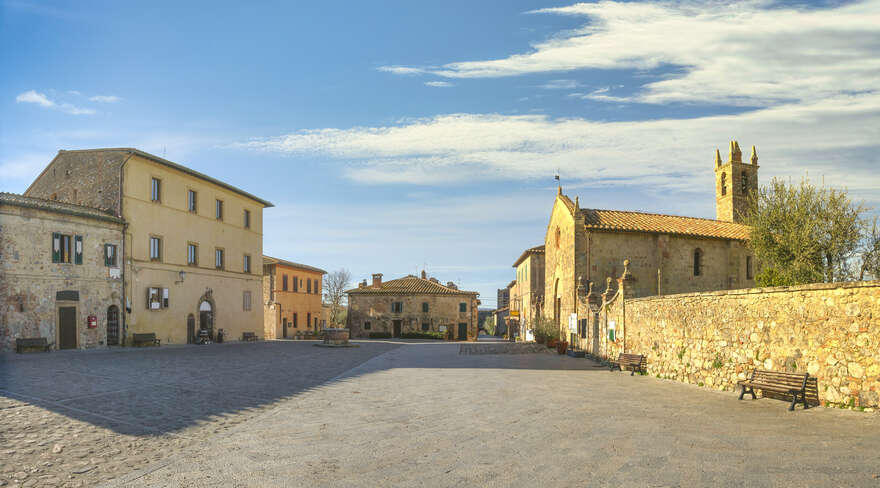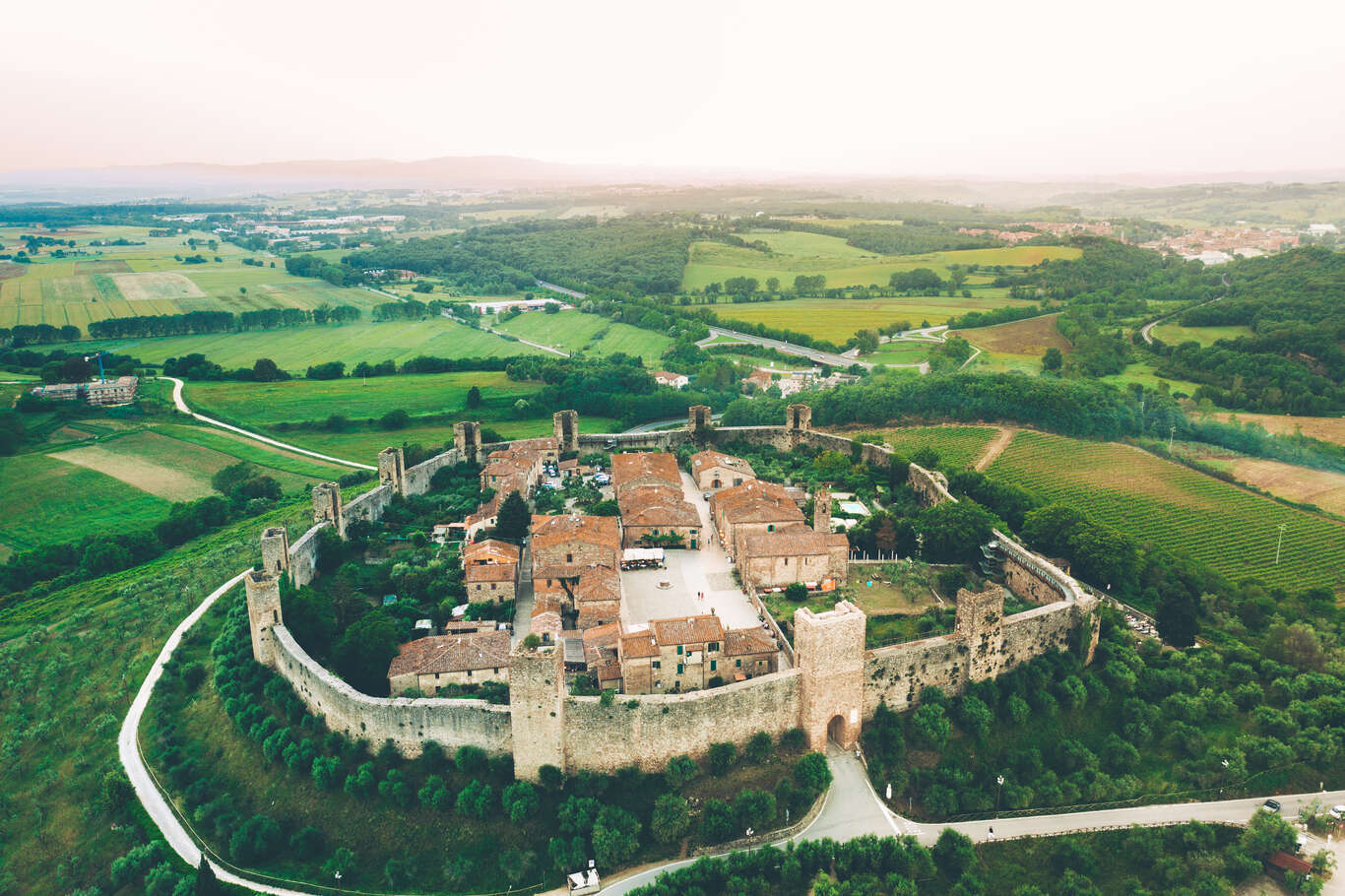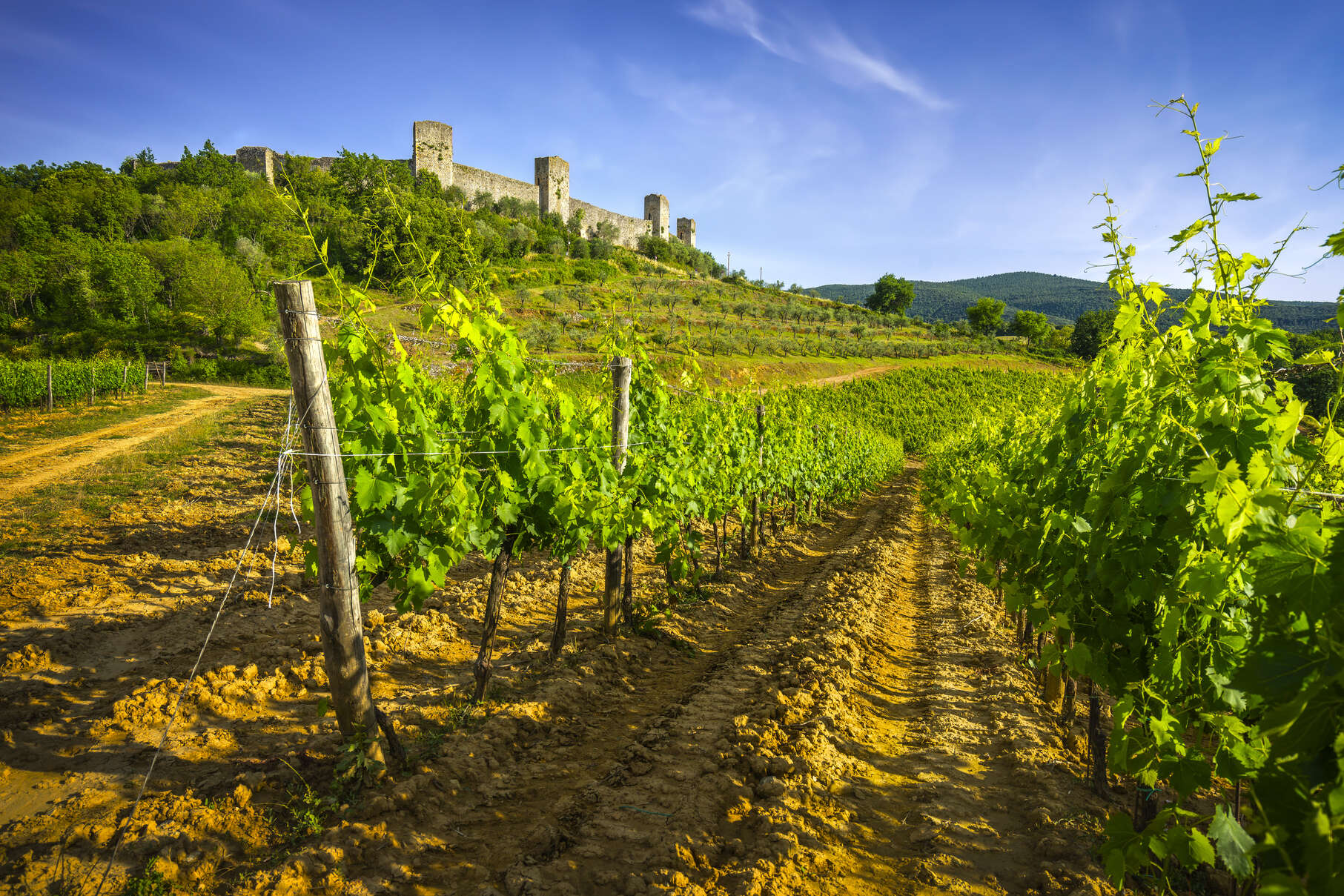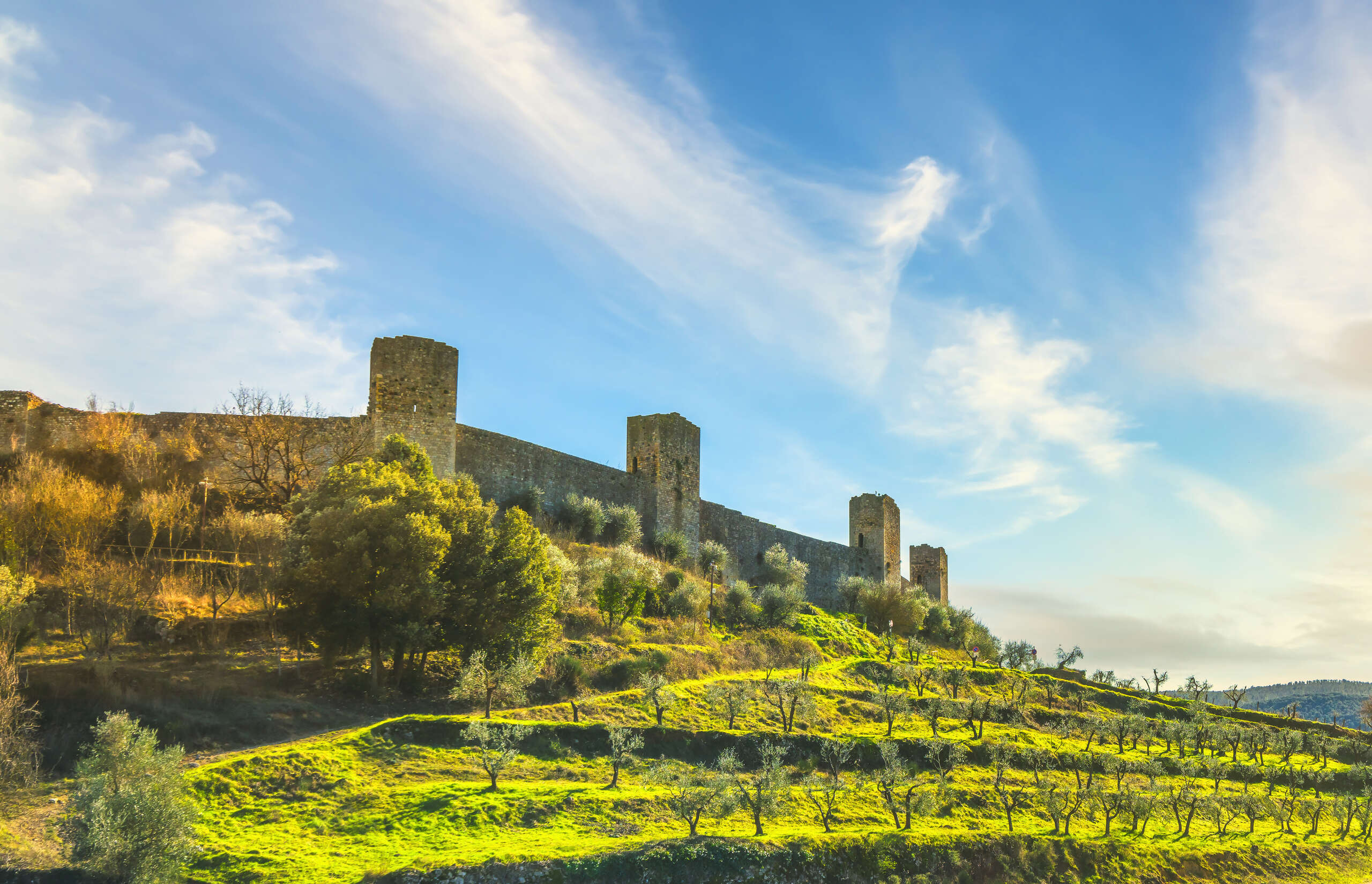Walls of Monteriggioni
The walled town of Monteriggioni is one of the most spectacular and best-preserved tourist destinations in Tuscany. Monteriggioni was strategically located on a hill along the Via Francigena. This ancient road connected Rome to France and served as an important trade route. This unique topography made it an ideal place for a fortified town.
Its history goes back to the Middle Ages
It was built by Siena as a defensive outpost against Florence. The construction began in 1213 and was completed within two years, with the help of 900 workers and materials from nearby quarries. To protect it even more, the village was surrounded by a moat and by fields harvested with poppies (which would have made the horses run away). In 1260, between Siena and Florence, a war broke out that lasted almost 4 centuries. The Walls of Monteriggioni heroically defended the citizens of Siena.
Impregnable construction of Sienese fortification
With its thick brick walls and 14 stone towers, Monteriggioni is an incredibly well-preserved example of great medieval military architecture. The towers are square-shaped and not round-shaped because they served both defensive purposes and as a pedestal for stone cannons that could shoot enemies attacking from below. At each corner stands a crenelated turret, used as a watchtower. There are three entrance gates: Porta Fiorentina, Porta Romana and Porta San Giovanni.
Medieval village nowadays
The walls today are intact except for some outlying towers that have been dismantled over the centuries to make room for houses and farms. At present, inside the town, there are about 50 houses, some private and some public buildings such as an ancient church or a museum illustrating the history of the village and how it looked in 1500.













